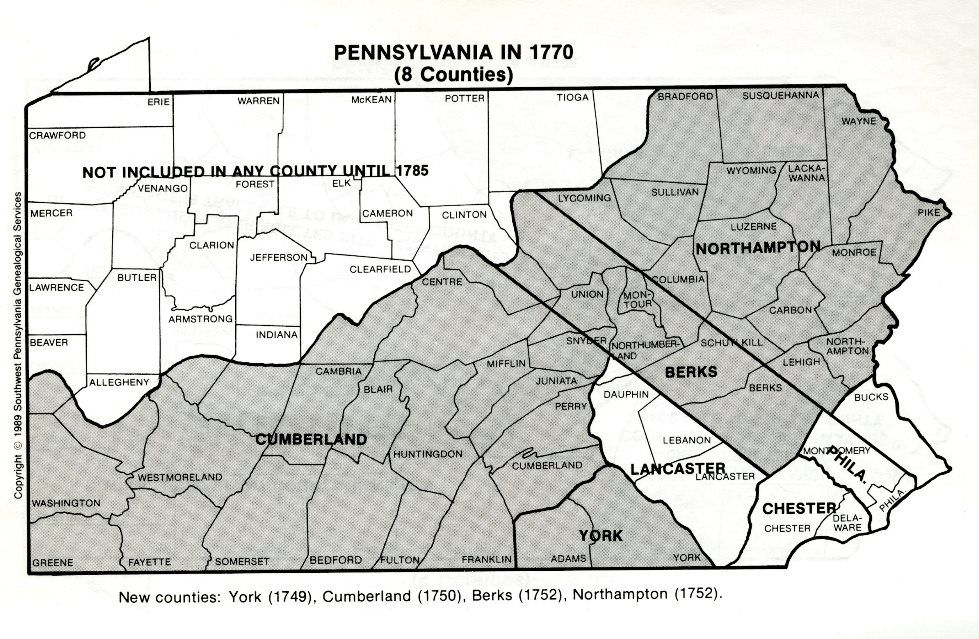On January 27, 1749/1750, the General Assembly of Pennsylvania created Cumberland County from Lancaster County in an Act titled “An Act for erecting part of the province of Pennsylvania, westward of Susquehanna, and northward and westward of York, into a county.”1 Theories differ as to whether the county was named for the county of Cumberland in England, or it was named for the Duke of Cumberland to honor his victory over Charles Edward Stuart and the Scots at the Battle of Culloden in 1746.2 In 1748, New Jersey named their new county Cumberland, as did North Carolina in 1754.
Cumberland County is often referred to as “Mother Cumberland” because of the twenty counties that were later created from it.3 In 1750, Cumberland County encompassed lands that stretched from the Susquehanna River on the east, to the Forks of the Ohio on the west, and Maryland on the south. In 1820, when Perry County was created from the northern portion of Cumberland County, the county finally assumed its current size of 550 square miles (42 miles from the Susquehanna River west to its border with Franklin County.)
Settlement on the lands that became Cumberland County began in 1737 when Blunston Licenses were issued. The Penn’s, who were not fond of the Scots-Irish, urged them to settle in the back country of Cumberland County. Provincial Secretary, Reverend Richard Peters, wrote, in a letter to Thomas Penn on March 16, 1752, “I suppose there is not in the world a more stubborn and perverse people than those of the County of Cumberland.”4 And in January, 1753, Thomas Penn wrote to Pennsylvania Governor Hamilton, noting Hamilton’s preference for the German “Dutch to the Irish settlers...”5 Cumberland County became the “headquarters” of the Scots-Irish in America.6 It was not until after the Revolutionary War that many Scots-Irish moved south and west, and the Germans began moving to the county in any numbers.
